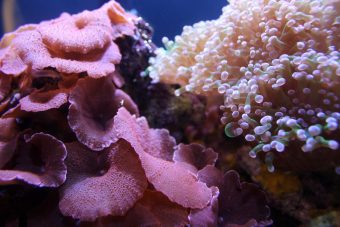
Global warming is affecting the increase in sea and ocean temperatures, leaving its mark on underwater life. One such coral in Fiji, over 600 years old, has recorded how the temperatures of the Pacific Ocean have changed throughout its long lifespan.
Data from this ancient coral reveal how climate patterns, such as the Pacific Decadal Oscillation, have evolved over the centuries, offering crucial context for understanding current and future climate trends.
The research was published in the journal Science Advances, and the species of coral is Diploastrea heliopora, sometimes known as the “honeycomb coral.” This massive coral was discovered in 1998, and scientists obtained samples by drilling into it.
This remarkable 627-year-old record from the coral (1370–1997) represents the longest continuous sea surface temperature record to date. To establish the chronology of temperatures in the waters around Fiji, this coral’s record was compared with others from the Fiji archipelago.
More:
- Global Fund for Coral Reefs Approves More than 25 million USD in Additional Funding for Resilience Action
- The world’s Corals are Bleaching – Here’s Why
- Up to 11 Million Tons of Plastic at the Bottom of the Ocean
From the coral, scientists determined that local ocean temperatures were high between 1380 and 1553, comparable to those in the late 20th and early 21st centuries. However, when combined with other coral records, the warming observed across the Pacific since 1920, largely attributed to human-induced emissions, represents a significant deviation from the natural variability recorded in earlier centuries.
While the waters around Fiji were almost as warm in the past as they are today, the problem is that the warming is becoming increasingly synchronized across the tropical and subtropical Pacific.
Due to climate change and rising water temperatures, coral bleaching is becoming more frequent, with four global bleaching events recorded so far, leading to the disruption of marine ecosystems.
One of the study’s authors stated that long-term climate variability in the Pacific is crucial for predicting future climate changes.
Energy portal





